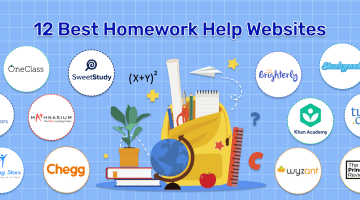Simple View of Reading: A Parent-Friendly Guide (2025)
reviewed by Franz Jerby Delos Santos
Updated on October 22, 2025
The simple view of reading illustrates why a child could read words accurately but is missing the meaning, or could retell a story but is stuttering over the print. In a nutshell, the simple view of reading demonstrates how word recognition and listening comprehension work together for the child to become a fluent reader who understands what the text is actually saying.
Key points (quick overview for busy parents)
- The simple view of reading model = Decoding × Language Comprehension.
- Target the weaker side first; then blend both in meaningful texts.
- Decoding: phonemic awareness → phonics → automaticity/fluency.
- Language: vocabulary, background knowledge, syntax, and inference.
- 10 to 15 focused minutes daily beat long, exhausting sessions.
- Brighterly personalizes lessons and supplies printables so the progress of your kids is consistent and visible.
- When development slows, inspect the strands (Rope) and adjust the week’s plan.
What is the simple view of reading?
The simple view of reading definition states: skilled reading equals fast accurate word reading times strong language comprehension. The simple view of reading model keeps us honest: we have to teach both sides. You can’t ride a bike with only one pedal!
Why does this model matter day to day? It pinpoints where to help first.
When I first share the simple view of reading (SVR) with families, I do a quick sketch of two pillars on the board.
- On the left is one pillar: Word Recognition (Decoding).
- On the right is the second pillar: Language Comprehension.
Then I simply sketch a book resting on top and say, “If either pillar wobbles, then the book of meaning wobbles too.” Noticing that representation, families start to nod in agreement because they have seen it, children who can read every word of text but cannot then tell you what happened. Or children who can understand every story you tell them when reading aloud, but when it comes time to read the print, they struggle to decode anything at all.
What is word recognition in practice?
Word recognition is a system of skills turning print into speech: phonemic awareness (hearing individual sounds), phonics (mapping letters to sounds), and automaticity, which means words are now recognized instantly. When kids read with cleaner and faster patterns, without adding irrelevant sounds, cognitive energy can be dedicated to making meaning.
How Brighterly supports the simple view of reading
Brighterly’s teaching aligns with the simple view of reading (SVR). Tutors assess a child’s progress and customize instruction. Live sessions and take-home materials focus on phonics, fluency, vocabulary, and reasoning. As progress is made, students are introduced to connected reading, blending both sides of the SVR for concrete, permanent progress in reading comprehension components.
Personalized lessons
Each reader follows a different path. Brighterly tutors start with a brief skills check to discover the areas of weakness (decoding or language comprehension) for each reader — an approach consistent with the SVR model reading framework. Lessons then make up phonics scope and sequence, oral language routines, and comprehension strategies. Personalization ensures the right skill is taught at the right time with just the right challenge level.
Brighterly reading worksheets
Between sessions, printable reading worksheets for kids keep the momentum. Expect bite-sized phonics practice (blending, word families), vocabulary tasks (kid-friendly definitions, examples), and comprehension checks (main idea, sequence, inference). Short, varied tasks prevent fatigue and make new learning stick.
If you’re ready to see your child’s success, book free reading lesson to get a friendly assessment and a week-by-week roadmap.

What is the simple view of reading formula?
The simple view of reading formula is:
Reading Comprehension = Decoding × Language Comprehension
The multiplication sign is crucial; if any of the factors is close to zero, the whole comprehension collapses. Efficient teaching aims at the limiting factor first, then combines both in authentic texts so that skills transfer to reading in everyday life.
Here’s the implication for teaching that schools and families consider impactful: the simple view of reading proposes that reading is fundamentally constrained by its weakest side. If one lifts the decoding (accuracy, automaticity) or augments the language (vocabulary, knowledge, syntax), the comprehension will increase, particularly when the practice involves a meaningful text.
Simple view of reading graphic
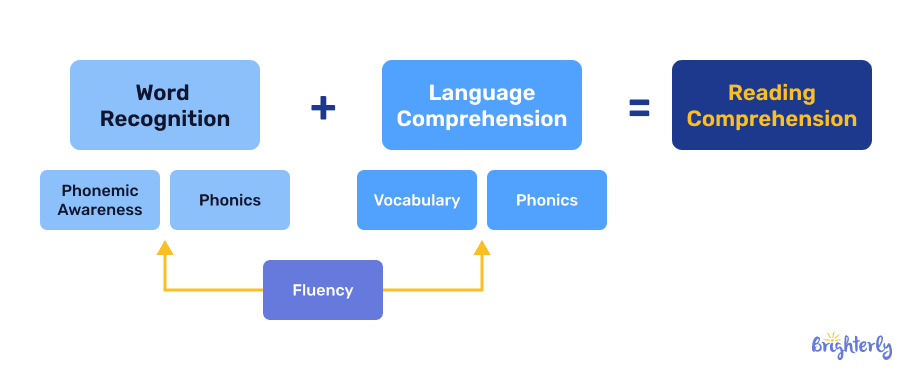
A traditional basic perspective on reading depicts two support pillars – Decoding (Word Recognition) and Language Comprehension – that combine to form Reading Comprehension.
If we want to expand on the simple view of reading graphic, many educators also refer to Scarborough’s Reading Rope, which braids strands of word recognition (phonemic awareness, phonics, sight recognition) with strands of language (vocabulary, background knowledge, syntax, verbal reasoning) in order to produce skilled reading.
Scientists suggested: “This latter model is more precise than SVR because it “unpacks the word recognition and language comprehension constructions”. When I begin with the SVR reading rope, the students love the metaphor for each strand being small but together they create strength.
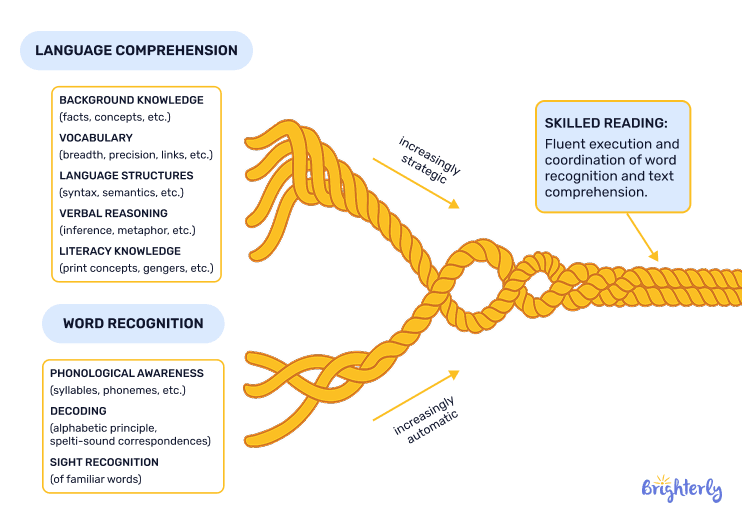
Components of the simple view of reading
There are two categories of the simple view of reading components that make up the concept. The word recognition family includes phonemic awareness, phonics, and fluent and automatic reading of words (decoding and sight recognition). The language comprehension family includes vocabulary, knowledge, syntax, discourse, and inferences. These reading comprehension components grow with explicit, cumulative, and connected instruction.
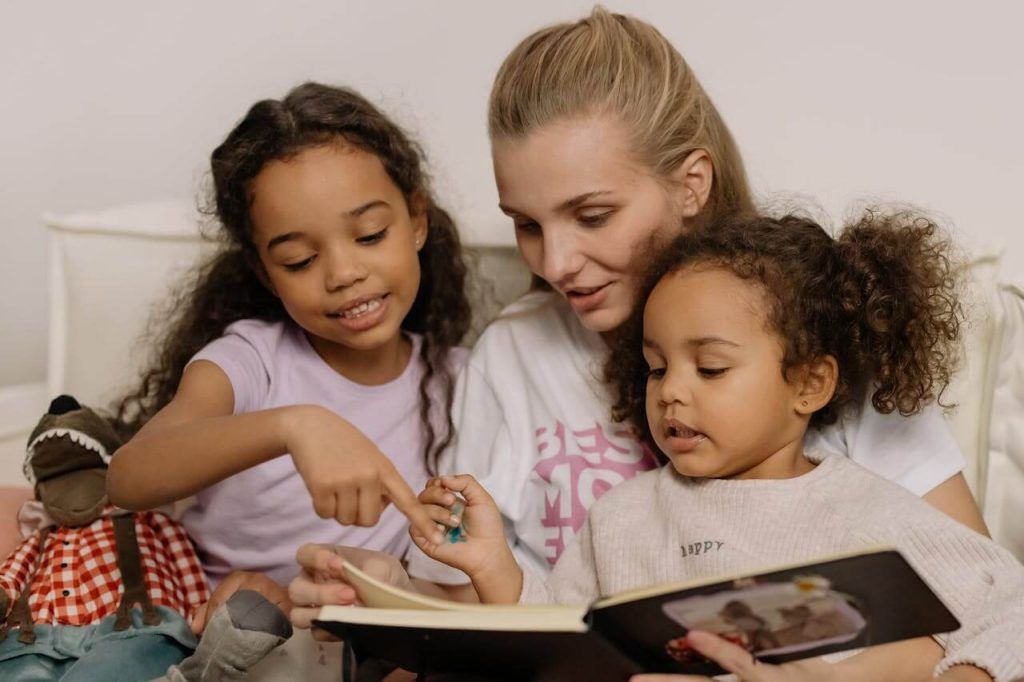
Decoding skills
- Phonemic awareness: hear and manipulate individual sounds (blend /s/ /a/ /t/ → “sat”).
- Phonics: map letter patterns to sounds (sh, th, vowel teams); practice with decodable texts.
- Automaticity & fluency: accurate, quick word reading frees working memory for meaning.
- Spelling as reinforcement: encoding strengthens decoding; word building cements patterns.
- Progress checks: one-minute reads, nonsense word fluency, and controlled text show growth.
I can still picture my student Daniel, who simply added a little schwa (the “uh” sound) to every consonant “tuh-a-puh” for “tap.” We practiced clean pronounce-and-blend moves first and then phrases. By the fourth week he was able to coast through a page of basic text. That one tiny little adjustment allowed him to open a larger door.
Language comprehension
- Vocabulary depth: robust, kid-friendly definitions, examples/non-examples, and “use-it-now” sentences.
- Background knowledge: science, history, and real-world experiences fuel inference and understanding what you read.
- Syntax & cohesion: pronouns, clauses, connectors (“because,” “however”) that knit ideas together.
- Listening comprehension: read-alouds model complex language and discourse.
Occasionally, a child can read a word like “photosynthesis” but cannot explain it. This isn’t a decoding issue; it’s a gap in knowledge. We can remedy this gap with very short video clips, concise explanations, and quick retrieval questions. Within days, the child is proudly teaching me the steps of the process.

The SVR model reading framework serves as a valuable tool for schools and families to prioritize what to teach first, particularly when it comes to early screening and support. For example, if a child has markers of a learning disability and/or dyslexia, SVR helps clarify instruction for the limiting side: targeted decoding (phonemic awareness, phonics, fluency) or enhancing language skills (vocabulary, knowledge, syntax). Starting with the basics and building in a systematic way is less overwhelming, and it creates quick wins, which is very important for confidence and motivation.
At home, parents should keep routines simple and precise. For example, when practicing new patterns at home, model how to say each sound cleanly (no vowels added) and then combine the sounds to make the word, and then have children use the new word in a sentence. That little action (hear → say → read → use) connects print to meaning and is a good addition to a SVR model reading stance: accurate word reading plus language understanding. Short early practices around these ways of describing work help all learners, especially those who have or may be at risk for a reading disability.
Why the simple view of reading matters for your child
The simple view of reading model explains uneven profiles: fluid oral reading but weak summary, or strong storytelling but weak decoding. When families identify the side of reading that is limiting a student’s ability to read successfully, and teach that side of reading explicitly, families see much quicker and clearer gains: fewer hesitations, richer vocabulary, better retells, and more independent reading choices.
Sometimes parents notice their student is changing after only a couple of weeks: Better stamina, fewer “stuck” times and better predictions or explanations. A small, consistent practice is more successful than one long, frustrating practice.
Is SVR also good for teaching adults? This subject has not been sufficiently studied yet.
Scientists note: “The Simple View of Reading (SVR) … has been studied extensively with school-age readers … However, little is known about the intricacies of the SVR for adults who struggle with reading.”
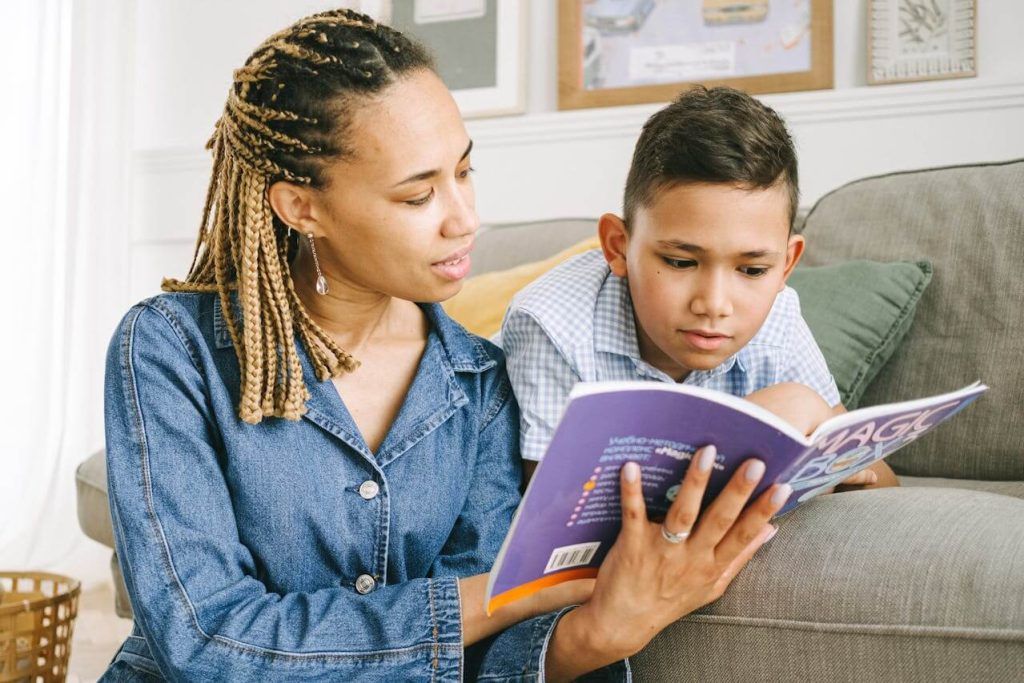
Steps to start the simple view of reading
- Begin with quick assessments to see if your child can decode unfamiliar words.
- Check if they can explain a paragraph.
- During your practice, choose one of these priorities (decoding or language) for two to three weeks.
- Use daily, short sets.
- Eventually, combine both together while reading connected text (decodables with oral retell, or vocabulary conversation combined with guided reading).
Practical applications of the simple view of reading
At home (10–15 minutes/day)
- If decoding is challenging and this limits comprehension: short review of phonics (2-3 minutes), have them read 6-10 decodable words, reread a phrase or two as you ask questions, and read a very short book after to boost their confidence.
- If language comprehension is challenging: read aloud a book with “stop-and-think,” teach 2 words/day, and retell in one sentence at the end.
- If you choose to mix both, retell and finish with one “why/how” question (to link your thinking).
With a tutor (2–3 times/week)
- Targeted phonemic awareness & phonics routines (sound boxes, segment/blend, word building).
- Language routines (vocabulary, background knowledge, sentence frames, text-evidence talk).
- Connected text for transfer (moving from controlled decodables to trade books).
- Progress monitoring (1-minute reads, vocabulary checks, short written responses).
Motivation & mindset
- Celebrate micro-wins (“You read three new words today!”).
- Offer students a choice between two activities.
- Keep routines predictable and short so the effort remains high.
- Movement breaks will help keep energy and memory strong.
Assessing progress the simple way
- Choose one metric for two weeks: correct words (in a minute), explained unknown words, or accurate main-idea retells.
- Annotate for smoother pacing, hesitations decreasing, and content clarity and accuracy.
- Keep the data from the experience as low-stress as you can; you can build praise on trends and not perfection. The aim is forward progression, not to earn a perfect score.
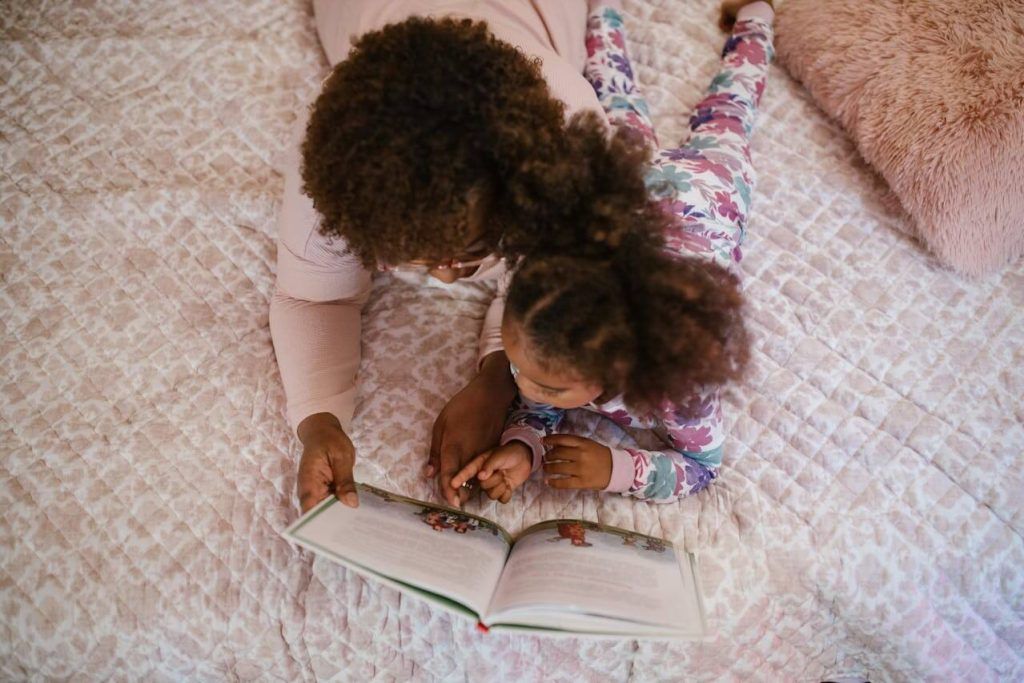
Family routines that grow both sides
- Consider reading as an everyday activity.
- Label kitchen items, sing sound games in the car, and talk about the meanings of new words at meal times.
- Ten joyful minutes of focused instruction are better than an hour of struggling.
- Daily shared experiences can build skills, knowledge, and confidence, and keep literacy alive and well at home and in everyday life.
💡Tip: Couple movement with learning – word hunts, hop-to-the-rhymes, charades using target vocabulary. A mix of physical activity helps the learning feel playful and promotes memory.
Conclusion
The simple view of reading provides a useful, level-headed roadmap: engage the act of decoding, the function of language, and books for each to connect. For expert coaching, practical hands-on stuff, and kind, friendly support, check out the Brighterly math and reading platform with professional reading tutors, interactive methods, and printable reading worksheets for kids.
Book free reading lesson to see where your child will grow first.










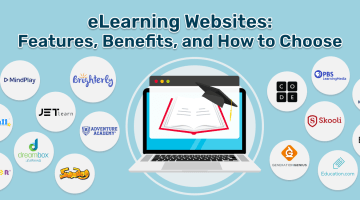

![Miacademy Reviews: Is It Worth It? [2025]](https://brighterly-stage.xyz/wp-content/uploads/2025/08/Miacademy-reviews_-Is-It-Worth-It-e1754287141491-360x200.png)
